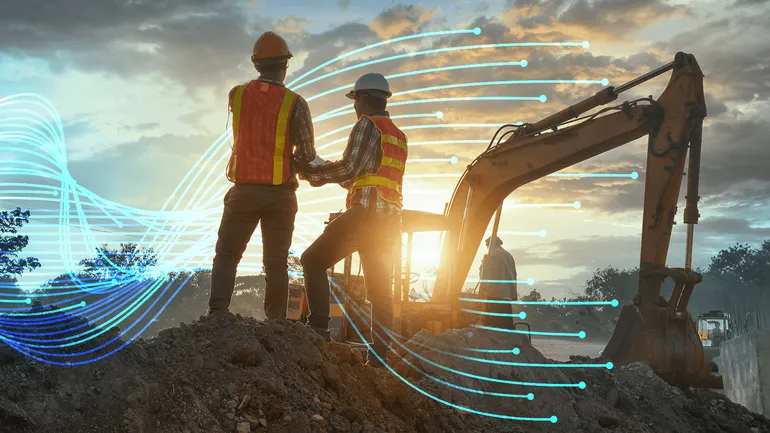Artificial intelligence (AI) is impacting every industry today. While the construction industry as a whole has historically been cautious in adopting new technologies, many realize when it comes to AI, avoidance is not an option.
The AI revolution doesn’t have to be anxiety-inducing, though. At its core, Artificial Intelligence (AI) is simply a technology that uses patterns and large amounts of data to learn tasks and make decisions on its own, similar to how humans learn from experience. However, while current AI tools are good at performing routine problem-solving or simple tasks, we’re far from a world where AI is at the helm of decision-making for construction projects. Instead, AI tools empower construction teams to do what they already do—more quickly and effectively.
In an industry where precision is essential, some construction professionals are understandably nervous about leaning too heavily on AI. But leveraging AI in construction today doesn’t mean handing off your project to an automated system outside of your control. Instead, AI tools are coming to platforms you already use, helping you spend less time on menial tasks and better use your project data.
AI works in the background, with most of the functionality behind the scenes, meaning you don’t have to understand the nuts and bolts of how it works to use it. What are the benefits of adding AI-powered capabilities to a construction project management platform?
- Spend less time on tedious tasks
Administrative tasks like rekeying information forms, managing documents and searching for information often consume many hours each week for construction professionals. AI tools can help reduce the time spent on tedious and repetitive tasks, such as extracting needed data from drawings and aggregating information from multiple document versions. For example, instead of reading a half dozen daily reports from subcontractors, let AI read them for you and surface any potential issues, trends and red flags in a fraction of the time. - Gather more data more efficiently
Getting the information you need from a job site is often fraught with complications. Daily reports, point cloud scans and safety inspections all require human time and effort to complete and submit. AI tools are helping to lower the barriers to reporting information from the job site. For example, instead of filling out a form, a foreman could verbally dictate to their devices what happened onsite that day and AI can capture, organize and quantify their report to be actionable for back-office teams. - Extract more value from the data you have
More data is not helpful unless you can quickly make sense of it. That means you need technology in place to centralize, aggregate and distill information in real time. AI can do that, offering predictive guidance and identifying trends and patterns in the data to inform functions typically requiring manual work like cost projections and risk identification. For example, financial data such as change orders, budget codes and labor hours can be synthesized through the context of a specific project to estimate financial and schedule risks.
At Trimble, our vision of an AI-equipped future of construction focuses on empowering professionals to be more effective by capturing robust, actionable project data more easily—and quickly filtering it to find what they need. Our focus on the field means we innovate ways for accurate, real-time data to flow in from job sites, from images to point clouds or time sheets. Flowing from the edge, that data powers downstream processes and informs project decision-making—and with AI, both gathering it and understanding it will become simpler and faster.
While human oversight is still necessary, AI tools can help you surface the data you need much faster and more efficiently so you can spend more time on what really matters: moving your projects toward completion.
See how Trimble is bringing the potential of AI to ProjectSight.

